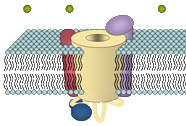 Bernhard E. Flucher
Bernhard E. Flucher
- homepage -
Department of Physiology and Medical Physics, Innsbruck Medical University, Innsbruck, AUSTRIA
Using the synergies of similar and amendatory research focus, local proximity, and shared facilities our lab tightly cooperates with Bernhard E. Flucher's lab. The most complementary input for our own research aims comes from his lab's exceptional experience in the techniques of immunocytochemistry. A considerable amount of joint publications results from this cooperation.
 Thorsten Schwerte
Thorsten Schwerte
- homepage -
Institute of Zoology, Leopold Franzens University Innsbruck, Innsbruck, AUSTRIA
The lab of Thorsten Schwerte is an acknowledged laboratory for work with zebrafish. His research focuses on the development of the cardio-respiratory system. Thorsten Schwerte developed numerous innovative methods for digital imaging, especially digital motion analysis. Studies on zebrafish larval motility are performed in close cooperation with his lab.
 Jörg Striessnig
Jörg Striessnig
- homepage -
Institute of Pharmacy, Leopold Franzens University Innsbruck, Innsbruck, AUSTRIA
The lab of Jörg Striessnig mainly focuses on neuronal Ca2+ channels and channelopathies. The cooperation with his lab accrues from a shared history of establishing Ca2+ channel research (membrane binding, protein chemistry, molecular biology, and electrophysiology) in Innsbruck. Striessnig lab's expertise in the production of site directed antibodies against different Ca2+ channel subunit isoforms and in electrophysiology led to manifold fruitful cooperation with our lab. Also here a considerable number of joint publications exist.
 Dirk Meyer
Dirk Meyer
- homepage -
Institute of Molecular Biology, Leopold Franzens University Innsbruck, Innsbruck, AUSTRIA
A major interest of Dirk Meyer's Lab is to understand the genetic programs and molecular mechanisms that convert pluripotent stem cells of the vertebrate embryo into differentiated cell types, with zebrafish as the model organism. Studies on zebrafish skeletal muscle differential expression patterns are carried out in cooperation with his lab.
